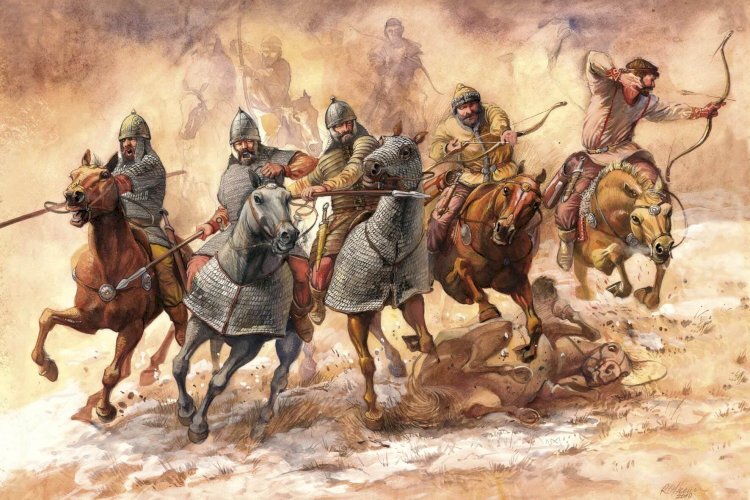Let’s start with the fact that the Kipchaks or Kypchaks are known to the ancient Greeks as a Scythian tribe.
Greeks called them “hippophagi” from Greek “horse-riders”, hence the name “Kypchaks”, this is my opinion.
I first noticed the Kipchaks called Hippophagi on Ptolemy’s map around 150 AD.

Map from 150 AD.
Sarmatians-Coneidians, Sarmatians-Hippophagi, Sarmato-Kipchaks. This mixed people around 150 AD or even earlier lived in the area of the Middle Volga, perhaps just north of Kazan, the exact location is difficult to determine.
It is clear from the name that Sarmatians and Kipchaks are different peoples, but in the early Middle Ages they mixed, which is not surprising. While the Sarmatians were an Iranian-speaking people, the Hippophagi Kipchaks were speakers of the language of the Altaic family.
The Hippophagi in Ptolemy are mentioned in 2 places in Eurasia, one in Eastern Europe and the other on the western slopes of the Altai Mountains.
What does that tell us? The homeland of the Kipchaks is Altai, but the migration of the Hun tribes affected them, and all this mass of nomadic hordes found themselves in the European part of the continent and began to mix with Iranian-speaking Sarmatians, those in turn passed to the language of more warlike Huns and Turks, and practically assimilated.
The common way of life contributed to the formation of new nomadic societies and there is nothing surprising that Sarmatians mixed with Kipchaks, also Sarmatians mixed with Huns, Huns with Alans, Goths after the conquest of the Gothic state of Oium and Slavs.
The Kipchaks after the 2nd century AD are not found in Greco-Roman sources, they are mentioned only in Chinese sources.

Map of 1-3 CE.
The Kipchaks in the 1-3 AD, living in the western Sayan of Altai, were part of the Dingling, Dinlin, Tele. It was a large union of tribes.

Map of the 7th-8th centuries.
The map shows that the Kipchaks in the 7-8th cc. were on the territory of Western Siberia and the Urals, saving up forces for further conquests.

Kangar Union
In the Middle Ages (9-11th century) the Kipchaks as part of the Kimak Union participate in the western campaign and oppress the Kangars (Pechenegs) and Oguzes.

Kimak Kaganate 8-11 BB.
In 1050-1055. Kipchaks capture the big territory of the Great Steppe and form the state of Desht-i Kipchak.

Map of the Kipchak state
Kipchaks in Russia were known as Polovtsians, most of the steppe from the Danube to the Irtysh was under their influence.
I believe that Turkic-speaking Kipchaks (Kumans) in 10-15th century contributed to all modern Turkic-speaking peoples of Eurasia.
Modern Turks are somehow connected with Kipchaks, Oguzes, ancient Turks, Huns.
The Middle Volga region as well as the Caucasus, Central Asia, Altai could be a kind of “cauldron for peoples”, where different peoples were mixed for thousands of years and it happens even now.

Ptolemy’s map. Middle Volga region.
